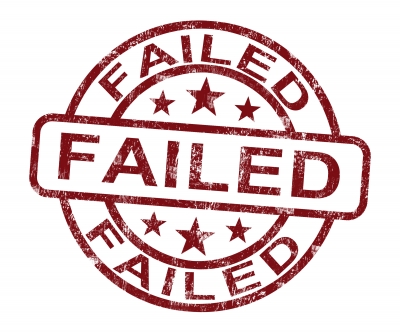You can’t just choose one way to market your organization.
Well, I mean, you can. You probably just shouldn’t.
Case in point. I worked with an organization that was pretty buttoned up in regard to digital marketing: SEO, AdWords, etc. It was impressive, really, how well oiled a machine its digital marketing was.
But at some point, they reached their ceiling. In terms of the keywords they chose for their business, they were maxed out, and their search impressions had reached more or less max capacity. In short, spending more or doing more would not have boosted traffic to their site significantly enough to make a difference. Sure, there’s always something more you can do in digital marketing, but it wasn’t going to keep moving the needle enough to meet company growth goals.
The problem was, they felt comfortable with search engine marketing. And that’s all.
You see, they had made weird, one-time forays into things like billboard advertising (one billboard on the side of the highway, once), and a poorly thought-out referral campaign. They made extremely occasional appearances at trade shows. They had set up social media accounts, auto-posted their blog posts, and then crossed social media off their to-do list. They put out press releases on things like their office redesign but never their product, and then posted these releases on free SEO sites for the backlinks, not the PR value. The only articles ever written about them were paid for. They waited for analysts to come calling, and the crickets were deafening.
You could go months — years! — without seeing a mention of them anywhere outside a search engine result page.
They had never made a true investment into any marketing tactic outside of search engine marketing, but nevertheless concluded from their limited experience that that those things weren’t worth investing in. Results and metrics didn’t support it, right?
Two things, really, can be learned from this cautionary tale. One: A robust, multifaceted, results-oriented marketing program is always the result of investment: Strategy, resources, hard work, unflagging dedication, and grinding consistency.
And two: Relying on one marketing tactic alone will pretty much guarantee that you never meet your growth potential.
Take our example. They rocked the search engine results page. They could have a Google search ad at the top of the page, and be in the top 10 position in organic search results for most of their keywords. They should have had amazing click-through rates (and tbh they weren’t bad). But they didn’t account for a very important thing: Human behavior.
Human behavior means that even if you rank at #2 organically and #1 at paid, you’re not guaranteed that click — particularly if no one has ever heard of you outside of Google. But if they’ve heard of your competitors — who happen to be ranked at #1, #3 and #4 — they’ll definitely click on them. Intuitively you probably recognize the truth of this.
That’s because when it comes to behavioral economics, human nature is often surprisingly predictable. Numerous studies have born out that decision making is heavily influenced by known brands: A known brand saves consumers decision-making time and effort in a wilderness of choices and messages; and going with a known brand offers them a reduced risk of disappointment.
Brand awareness matters: Brands in the initial-consideration set can be up to three times more likely to be purchased eventually than brands that aren’t in it. This is especially true with considered purchase decisions.
If our example company had bothered to establish a real-world reputation or done the consistent branding work necessary to be recognized outside their own little SEM bubble, they would not be the subject of this blog post. But they didn’t, which is why they are such a useful example of what not to do.
The moral of their story is: Put in the work necessary to implement multiple tactics well. Branding matters. Consumers need to have many touch points, preferably across a variety of influential media. The messaging they receive needs to be integrated and present along every step of their consideration process.
And don’t just gravitate toward one marketing tactic because it’s easy. In the end, it will lead to difficult outcomes.








